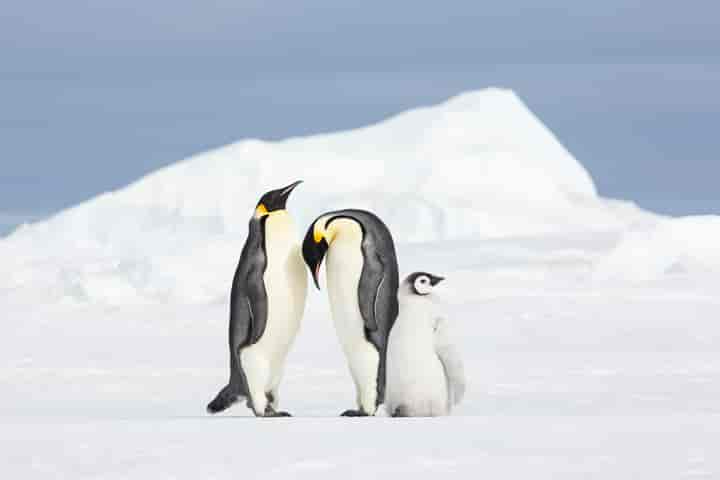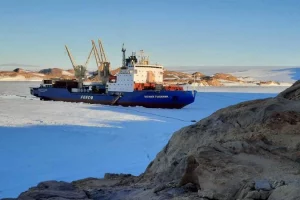The adorable penguins who don’t have wings but are ace swimmers were not always flightless. They lost this ability 60 million years ago much before the Antarctic ice sheet came into being and now scientists disclose how all this happened as per a report in livescience.com.
In fresh research the scientists by closely studying fossils of penguins and genetic material of the extinct and present-day birds have discovered that several changes enabled them to live a life in water. These adaptations at the genetic level included eyesight that responds to the blue tones under the water, changes in blood oxygenation and in density of bone. The cumulative changes helped these creatures overcome the important alterations in the environment which took place in a span of millions of years.
The study’s co-author Daniel Ksepka informed that the oldest fossils of penguins which go back to 62 million years ago are at the Bruce Museum in Connecticut’s Greenwich and it shows that by this period these birds had already lost their ability to fly. Yet, their appearance is different from today’s penguins as their legs and beaks were longer while their wings still resembled wings instead of flippers.
Commenting on this, Ksepka said: "These early ones are probably evolving from a puffin-like animal that could still fly through the air.” It may be noted that this ancestor has not been found in the fossil record yet and so one doesn’t known when exactly did the penguins lose their aerial capabilities.
THE EMPEROR PENGUINS ARE HATCHING! ✨ Emperor penguin males incubate their eggs under the harsh conditions of the Antarctic winter. The chicks will begin to hatch soon, as the females return, relieving the males of their long fasting period of up to 55 days.
🎥 @PENGUINS_GPS pic.twitter.com/xh7zPPb3DO
— Wildlife Conservation Network (@wildnetorg) August 8, 2022
As time passed, there came into being as Ksepka said, a "motley crew of interesting penguin characters”. They varied from those with long spear-like bills to those which were adorned with red feathers to ones which were taller than today’s largest species, the emperor, by a foot or two.
The research made an in-depth analysis of fossil evidence and the genetic information of present-day penguins and those which ceased to exist a few hundred years ago. What the investigation reveals is that the origin of penguins took place in what is today’s New Zealand 60 million years ago. From there they moved to South America and Antarctica and came back to New Zealand.
The splitting of the species of today took place in the course of the last two million years, Ksepka said. During this timeframe, the planet witnessed a number of glacial and interglacial periods which saw expansion of polar ice as well as its withdrawal.
The ice when advancing made the birds move northward thereby isolating one group from another. This allowed them to take their own evolutionary paths for 100,000 years. Thus, when the ice withdrew the penguins had already evolved into a different species.
Commenting on this Ksepka said: "It doesn’t affect all species equally, but it’s almost like someone is turning a crank to make more penguin species.”
What surprises Ksepka is that the rate of evolutionary change among penguins is slowest. He said this can’t be explained and needs more research. The reason being while animals which are larger and procreate slowly do have evolutionary rates which are slow but there are birds bigger than penguins which evolve fast.
Despite slow evolution, penguins have made a series of adaptations for surviving near the sea and in it. Sharing genes with other flightless birds, they have shortened their wings. Their unique genes changed their wing muscles into tendons resulting in stiffening of wings and giving them flipper-like looks.
Mutation in genes connected with storage of calcium provided them dense bones allowing these birds to dive.
Changes also manifested in their diet and digestion. Genes linked to the ability to digest exoskeletons of crustaceans were lost suggesting that they ate fish and squid. Interestingly, the Increasing ice sheets formed an Antarctic ecosystem which was rich in small crustacean krill and fortunately the penguins still had one gene left – the CHIA – that allowed them to digest them. "If that last one had shut off, they may have had a hard time digesting [krill]," Ksepka said.
What is disconcerting about penguins is that three-fourths of their species have disappeared and changes in climate and global warming could render more to vanish. This makes chances of survival of those species which have a distinct lifestyle like Emperor penguins very precarious. Explaining this, Ksepka said, with melting of sea ice, they may find it difficult to find breeding grounds. On the other hand, the Galapagos islands’ tiny penguins will have no place to migrate if their habitat becomes too hot for living.
Summing it up Ksepka said: "We definitely think these animals are sensitive to environmental change, and in many cases, they are already considered endangered. In other cases, they could become much more vulnerable over the next few decades."
Also read: Climate change enables Gentoo Penguins to expand their habitat in the Antarctica




















